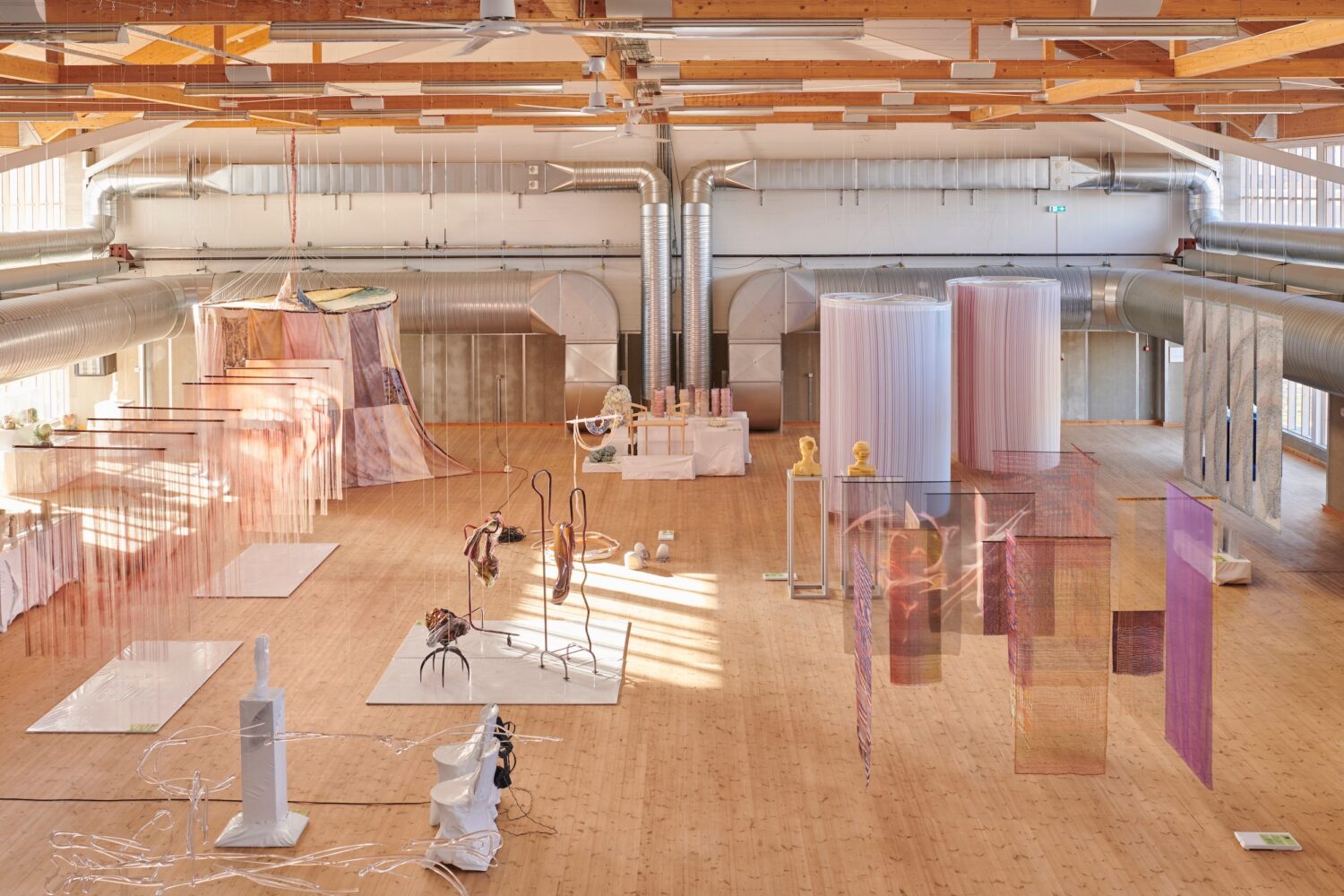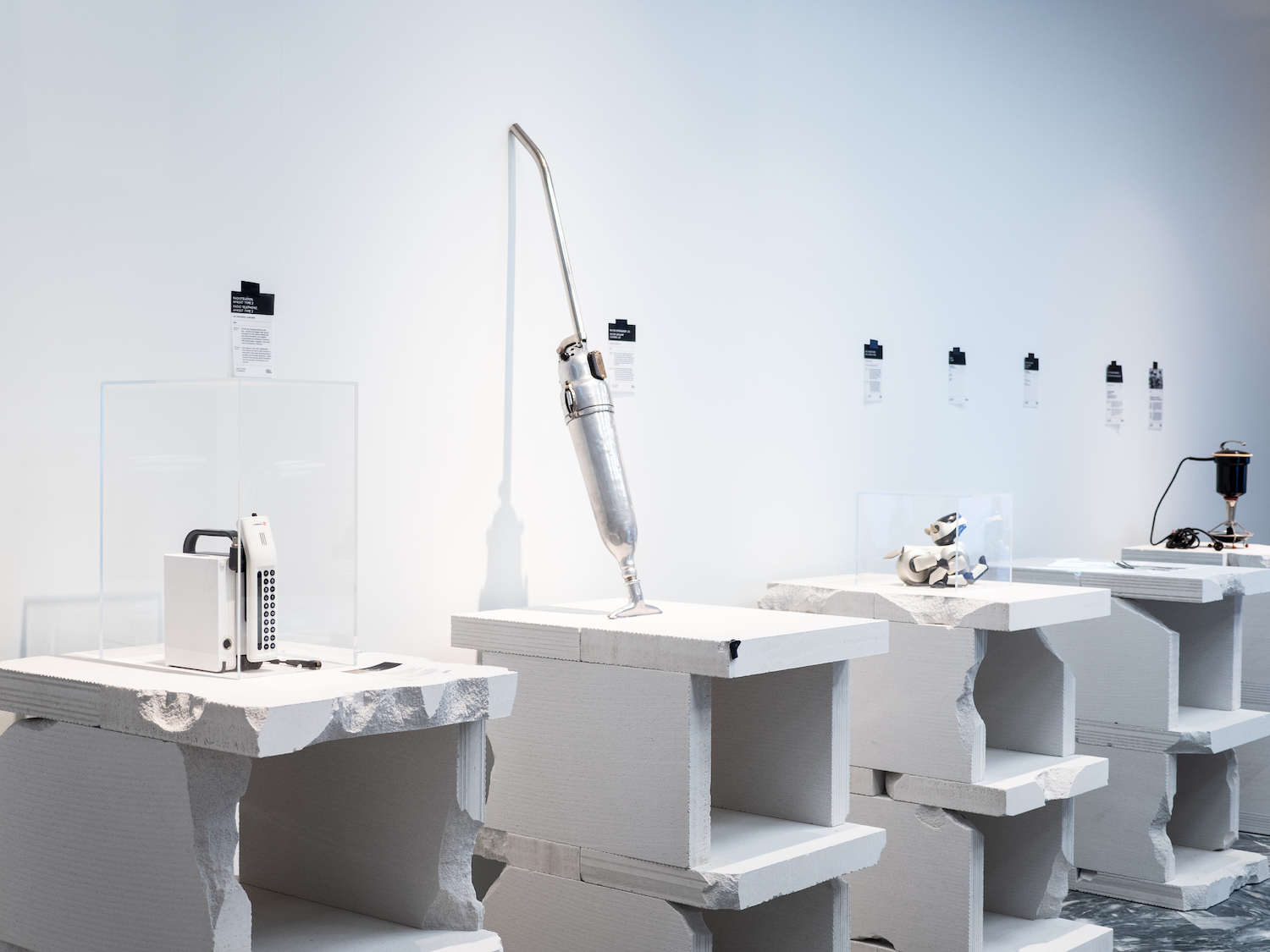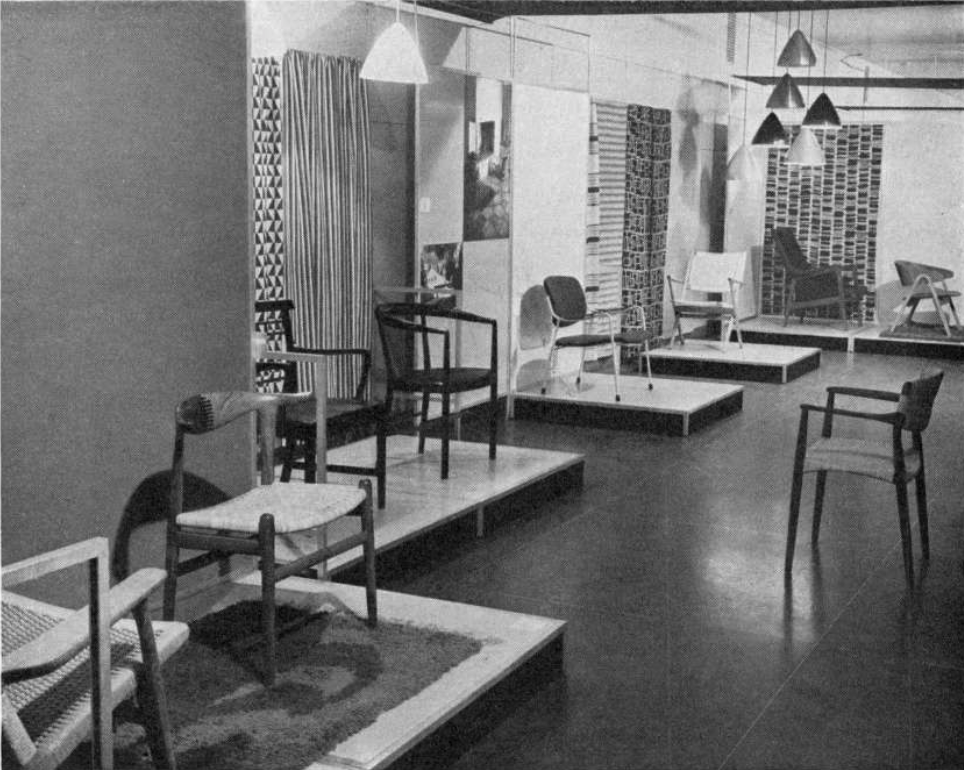The hand, the heart and the brain
Maria Lind leans on three key concepts when planning exhibitions. One of them is called ‘the critical zone’, another she calls ‘women in the north.’
The third thematic thread that weaves its way through most of the art and crafts Maria Lind chooses to present at Kin Museum of Contemporary Art in Kiruna is ‘hand, heart and brain.’ It’s not enough with brain and heart, the hand plays an important role.
‘Art is often a seismograph that perceives movements in society before others recognise that a movement is happening. Over the past 25 years, art has seen an increased interest in crafts and the work of the hand. It’s about wood, textiles, ceramics and glass, which are gaining more space in contemporary art,’ says Maria Lind and points to a possible reason for this development.
‘I think artists realise that it’s becoming more and more important to be able to make something themselves. We are told that digital can fix everything for us and solve all our problems, but instead we should focus on retaining craft skills and developing them. It’s a survival technique and a reaction to the intangible digital world.’
Dig where you stand
It seems natural to talk about survival when you’re in Kiruna. The Swedish mining town is itself under partial threat of collapse due to the extensive underground mine shafts that were dug under the town for generations in search of iron ore. A few years ago, the decision was made to move the town’s inhabitants four kilometres away and create a new Kiruna at a safe distance from the threat of collapse.
In 2018, the move gave birth to a new town hall designed by Henning Larsen Architects, and inside this new public building is also the Kin Museum of Contemporary Art. Kiruna’s location means a lot to Maria Lind’s work as curator at one of the world’s northernmost art museums, where she has been director since 2023.
The young museum is owned by both the local municipality and Region Norrbotten, which covers the northernmost quarter of Sweden. The area is 20 per cent larger than Austria, so there’s a lot of land to cover.
‘We want to be a unifying institution and are building both a collection and working according to the principle formulated by author Sven Lindqvist in the 1970s: Dig where you stand. The collection reflects the work of the museum. We don’t shop for art in galleries,’ Maria Lind explains via Zoom.
‘We intertwine the local, the regional, the national and the international. All parts must be in play at the museum. It’s also important that we work with art of the highest quality. What we exhibit must be sophisticated, complex and ask questions that call for challenging answers.’
Is there an audience for sophisticated and complex art in Kiruna, a city of 18,000 inhabitants?
‘Yes, it’s everywhere. It’s not just about the art, but how you communicate it. We’ve gone from 3,500 visitors in 2023 to 13,000 in 2024, which is very good for a city the size of Kiruna. I like to say that we want to be the generous front runner and show forward-thinking art in a welcoming way.’
Working curatorially
It’s not just people from the city who come to Kin. Kiruna is a tourist destination with access to magnificent nature, true winter darkness and midnight sun in summer. Maria Lind emphasises that many locals are interested in culture and turn up in large numbers for exhibitions, workshops and lectures. The museum has also initiated a residency programme for Swedish and international artists, giving them the opportunity to do research in the region.
The international dimension has been a big part of Maria Lind’s own career. She has previously worked as a curator at Moderna Museet, head of Kunstverein München, head of the master’s programme for curators at Bard College in New York and Tensta Konsthall in a suburb of Stockholm. She came to Kiruna from a job as Cultural Counsellor at the Swedish Embassy in Moscow. When describing her work, she prefers the English phrase working curatorially.
‘Being a curator is often a craft. You borrow works, hang the works and write about art, and that’s important. Working curatorially is more complex. It’s about connecting place and time with current issues in art. When working curatorially, the goal is often to create something that doesn’t just confirm the existing order. That’s how I’ve thought about my work since the turn of the century.’
You work in a corner of Sweden that has a tradition of activist art. For example, there are strong alternative music scenes in Luleå and Umeå. How does activism affect you and the museum?
‘I’m still new to the area and have only lived in Kiruna for a year and a half. I’m still getting to know the local movements. But there is a political progressiveness in the region that I rarely encounter in southern Sweden. People are aware of the urgency of the world situation. Russia, Finland and Norway are a short distance away. Nature is very important and Kiruna is located in the heart of the Swedish side of Sápmi, the land of the indigenous Sami people. There’s also a Finnish-speaking minority who, like the Sámi, have historically been treated badly by the Swedish state.’
At Kin, there is currently an exhibition that explores some of these regional threads. Craft artist and artist Katarina Spik Skum has created her own version of Sami design and built an installation inspired by the interior of a Sami home/tent.
‘It’s a meeting between the local and something bigger. Katarina is a Sami duojar and works with doudji, which is a Sami crafts. She is inspired by her grandparents and offers a conceptual approach to interior design. There are beanbags, poufs, tables and more. Most of it she made herself, others she decorated or created in collaboration with other craft artists. The result is a collage based on traditional doudji, which she gives a personalised twist so that it’s not just a repetition of traditions,’ explains Maria Lind.
Doudji is usually used to create things that are to be used and not put on a pedestal in a museum, but Kin has purchased Katarina Spik Skum’s work for its permanent collection. Maria Lind’s curatorial role in this case is to initiate the process and create the framework for the artist’s work to unfold.
‘It started with an invitation from the Gothenburg Book Fair, which in 2024 would have Sápmi as a focus area. We were asked to help create their booth for the fair. First the installation was there, then it came to our museum, where it will live in the future, which is fantastic.’
Public education 2.0
Is it important to you that the audience likes what you show at Kin?
‘It’s important that they perceive our exhibitions as essential. They don’t have to embrace them or think they’re good. I never think about what visitors will think of an exhibition. My focus is on showing things that are important and necessary in time.’
Part of this work includes liaising with the region’s cultural institutions. Kin may be far from other ‘fine’ museums, but Norrbotten is rich in art associations and popular movements. Maria Lind is in the process of strengthening co-operation with actors outside the museum walls.
I’ve been interested in this since the 1990s, and we need to do more of it at Kin. In addition to many interesting artists, several municipalities in the region have art galleries that are not run professionally, but by local art organisations. These are ‘happy amateurs’ and people who are really passionate about art. Then there are museums like the Silver Museum in Arjeplog, which has a fantastic treasure of Sami silver, or the Gällivare Cultural Museum, which is located in the centre of an old mining town and houses a unique collection of labour strike art.’
‘We need public education 2.0. This applies to everything from Grundtvig’s idea of folk high schools to individual and collective liberation through education. I want to make art accessible to more people, while maintaining the integrity of art and artists,’ says Maria Lind.
When asked whether sustainability and inclusion are part of that task, she replies that Kin should not create exhibitions targeting specific groups in society, but rather ensure the dissemination of art and crafts so that it reaches those who may find the museum’s activities interesting and arouse curiosity. The same philosophy applies to the artists’ relationship with sustainability, which she doesn’t make demands on either.
‘Inclusion is a tricky concept and phenomenon. Who makes demands on whom, and what should be included and how? At Kin, we try to develop other methods that create different interfaces and participation.’
About Maria Lind
Curator and director of Kin Museum of Contemporary Art in Kiruna since 2023, Maria Lind (born 1966) is one of the Nordic region’s most prominent curators and has previously directed Tensta Konsthall in Stockholm and Kunstverein in Munich. She has been curator at Moderna Museet in Stockholm, co-curator of Manifesta 2, the biennial for modern art, and artistic director of the Gwangju Biennale, Asia’s largest contemporary art event. Her latest book, ‘Konstringar – Vad gör samtidskonmsten?’, from 2021, is a proposal for public education in contemporary art.
Theme: Scenes of Crafts

Formkraft is looking to craft exhibition spaces and curators. Which venues showcase crafts? How are works curated? What are the challenges, opportunities and shortcomings? The industry is calling for an art centre that gives more space to contemporary craft and design and with strong communication.
Articles are published regularly.
Art centre with an obligation to communicate?
Denmark lacks a scene that purely exhibits craft and design. We have several museums and galleries dedicated to the field, but we miss the big stage where craft artists and designers can frolic freely with a perspective on both the past and the future. A stage that can manifest and communicate the potential that does not have to take into account political discourses and museum obligations, but can focus solely on form and the cross-material potentials.

From the archive..
Design in museums 2022: Towards an ethical design aesthetic
In the summer of 2022, new design exhibitions opened in both Copenhagen and Oslo. Norway’s new National Museum seeks to embrace the full scope of the design concept, while Designmuseum Danmark focuses purely on – and renews – the aesthetic form.
By Ingrid Halland, Norwegian art historian and art critic with a PhD in 20th-century architecture history

Milano, New York, Toronto, Warszawa … When the exhibition machine started
Exhibitions of Danish design are wildly popular, but that is not a new phenomenon. Since the Great Exhibition in 1851 at Crystal Palace in London, companies, craft makers and designers have used exhibitions and trade fairs to market their products and designs. These exhibitions often enjoyed intense media attention and coverage. During the 1950s, Danish design and craft also attracted international attention in the big traveling exhibitions Design in Scandinavia in 1954–57 and The Arts of Denmark in 1960–61, but the most prestigious design manifestations of the decade, the Triennale di Milano, also served as an effective platform for marketing Danish modern furniture and other functional interior design items.
By Susanne Bruhn PhD Fellow. SDU-University of Southern Denmark. Department of Design and Communication.



